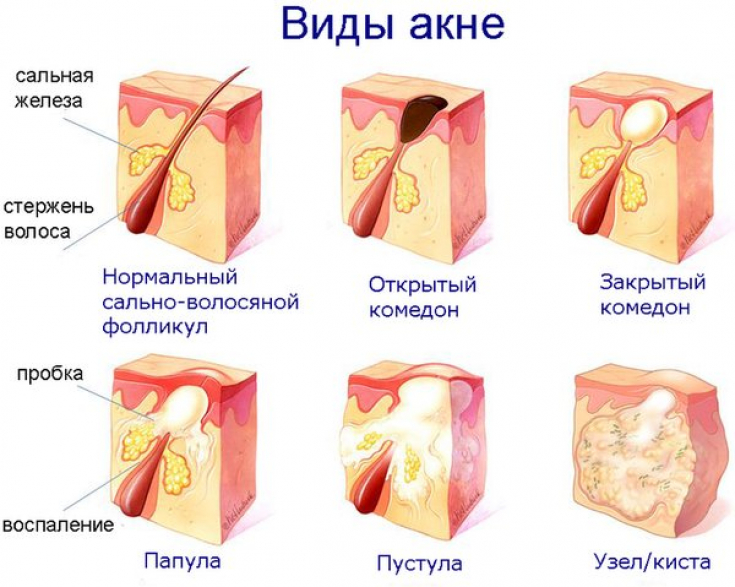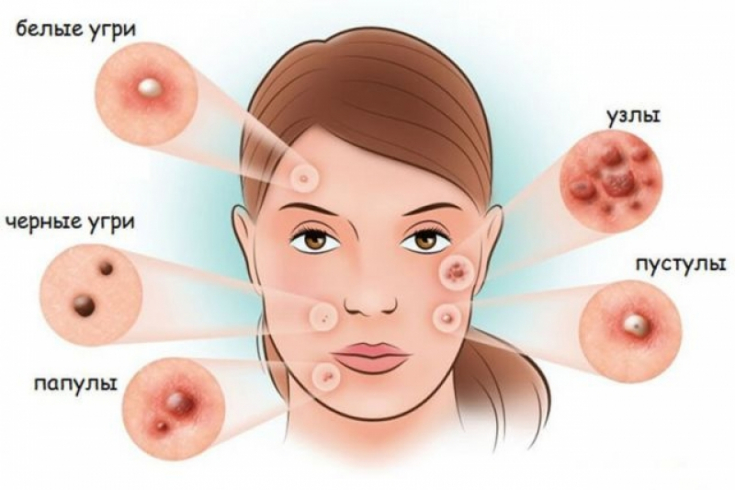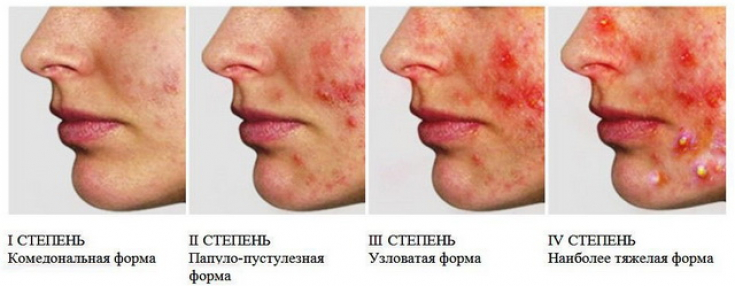Acne is one of the most urgent problems of modern cosmetology.
In the group of people of adolescence and young age, the frequency of acne is significantly higher than the average, reaching 80-90%. A significant proportion of individuals (up to 11%) develop acne over the age of 25.
Find out in the article on estet-portal.com about severe forms of acne and the main approaches to the treatment of these forms of the disease.
The problem of acne in the practice of a cosmetologist
Each of the forms of acne has certain clinical differences and features regarding etiological factors. So, most often in the practice of both a family doctor and a dermatovenereologist, juvenile acne is diagnosed. They affect puberty and usually occur at 12-13 years of age in girls, and 13-14 years of age in men.
Follow us Instagram!
The disease begins with the appearance of single first open, and later closed comedones on the skin of the face (mainly in the nose, forehead, chin). With the progression of the disease, the number of rashes increases, they spread to the entire area of the face, and also appear on the chest, back, shoulders.
Retinoids: a revolutionary tool for fighting acne and photoaging
In some adolescents, acne is limited to a mild course, sometimes there are single inflammatory acne − papules and pustules. However, in most pubertal patients, the disease acquires papulo-pustular forms with the formation of many inflammatory elements that require topical and systemic antibiotic therapy.

It should be remembered that in the presence of inflammatory nodules and pustules, topical antibiotic therapy must be carried out without fail, since its absence can lead to the formation of more severe forms of inflammatory acne − cysts, nodules, scarring, post-inflammatory hyperpigmented patches, spreading rash.
Systemic antibiotic therapy is indicated for moderate to severe papulo-pustular acne.
Peculiarities of therapy for acne conglobata
Conglobate acne is a very severe form of acne, in which, in addition to comedones, papules and pustules, numerous large-sized nodes, cysts, abscesses are formed, located deep in the skin. Cysts are filled with purulent contents. The elements of the rash are painful on palpation. The rash is usually not limited to one area of localization, but covers the face, back, and chest. After the regression of these elements, large scars remain − atrophic, hypertrophic and keloid.
Closed comedones: no one is immune from the appearance of small nodules
Acne conglobate is an indication for systemic retinoids, as other therapies usually fail. External therapy of cysts and nodes should also be urgent. Traditional topical acne treatments (retinoids, salicylic, azelaic acid, benzoyl peroxide, antibacterial drugs, etc.) are not always highly effective in the presence of deep cysts and nodules.

Therefore, the most optimal remedy used in dermatovenerological practice for the treatment of deep inflammatory elements of the rash is Ilon ointment. Ilon ointment is extremely clinically effective not only against inflammatory forms of acne, but also in the treatment of boils, carbuncles and abscesses, which makes it indispensable in the practice of a dermatovenereologist.
Three pillars of modern topical acne management
Acne inversion therapy
Acne inversa is also a very severe form of acne, which is characterized not only by the sebaceous glands, but also by secondary lesions of the apocrine sweat glands, which are also associated with hair follicles. With this form of acne, the wall of the hair follicle breaks and a pronounced infiltrate forms around the remnants of the follicle.
A significant role in the development of inflammation in inverse acne is played not only by Propionbacterium acnes, but also by Staphylococcus aureus and hemolytic, less often − other microflora.
Therefore, in the treatment of the inverse form of acne, it is imperative to prescribe systemic antibiotic therapy, and in topical therapy to combine broad-spectrum topical antibiotics (Tirozur gel, which, in addition, promotes wound healing) and Ilon ointment with unique antiseptic and anti-inflammatory properties.
Clinical presentation of fulminant acne
A very severe form of acne is fulminant acne that occurs predominantly in pubertal males. The characteristic signs of lightning acne is the instant appearance of a large number of inflammatory elements (including cysts and nodes) against the background of the absence of the formation of new comedones; lesions of a large area of the skin (however, the rash appears mainly on the back, chest, shoulders and does not cover the face), the presence of general intoxication (weakness, headache, joint pain, fever, leukocytosis and an increase in ESR in the blood).
Systemic antibiotic therapy in the treatment of acne
After recovery, numerous scars often form on the skin of patients. In the occurrence of fulminant acne, an important role is played by infectious-allergic and toxic mechanisms that require appropriate correction.

Topical therapy should necessarily include broad-spectrum topical antibacterial agents (preferably also with antifungal properties against yeast-like fungi, since the role of these fungi in the progression of fulminant acne has recently been proven).
As with conglobate, inverse, and fulminant acne, relapses of the disease are often noted, therefore, after a course of therapy, preventive treatment should be prescribed in order to prevent severe exacerbations of acne.
Testosterone and acne: how to break the vicious cycle







Add a comment